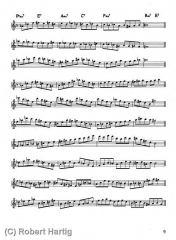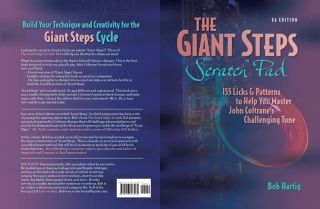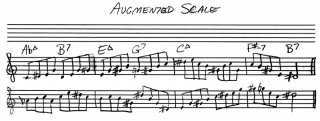BUY MY BOOK! BUY MY BOOK! BUY MY BOOK! BUY MY BOOK! BUY MY BOOK!
Never mind the rest of the gobbledegook on this page–just go to the bottom and start clicking on shopping carts.
As for you less impulsive types: Gosh, I hope I’m not being too forward. In real life, I’m the retiring, wallflower type who would never think of grabbing you by the lapels and shaking you wildly about while protruding my eyeballs at you and screaming, “BUY MY BOOK!” Never. The marketing methods I use to get you to buy The Giant Steps Scratch Pad–available in C, Bb, Eb, and bass clef editions–are far more subtle. I prefer to drop discrete hints, such as sending out glossy, full-color mailers that say things like, “This Father’s Day, give Dad the gift that says ‘I love you!’ Give him The Giant Steps Scratch Pad.” Low-key is best, that’s what I say.
Ummm…did you get the mailer?
Well, no matter, because here is your reminder that now is the perfect time to get Dad, or Mom, or your Aunt Bronte who plays the crumpophone, or maybe even your little old self, a copy of the Scratch Pad. Why is now so perfect a time? Because now is such a totally in-the-moment time, and jazz improvisation is such an in-the-moment art form, and Coltrane changes typically fly by at such an in-the-moment, near-light speed, that, overlooking the utter pointlessness of everything I’ve just written, you really should cough up $9.50 and BUY MY BOOK.
Do it. Not only will you be keeping a starving artist in Ramen for a week, but–seriously now–you will also be getting a truly unique and valuable practice companion for jazz improvisers. If you’ve ever wanted to master Coltrane changes, this book will do the trick. To the best of my knowledge, it’s the first practical, hands-on resource for jazz instrumentalists of every kind that helps you develop the technique to play Giant Steps changes. You can find plenty of material on Coltrane’s theory, but very little that you can actually wrap your fingers around in the woodshed.* The Giant Steps Scratch Pad fills that gap, taking you beyond theory to application.
Here’s what you get:
- * A brief overview of “Giant Steps” theory
- * Insights and tips for using this book as a practice companion
- * 155 licks and patterns divided into two parts to help you cultivate facility in both the A and B sections of “Giant Steps”
- * 2 pages of licks using the augmented scale–the “universal scale” for Coltrane changes
Click on the image to your left to view a printable page sample from the Bb edition (for tenor sax, soprano sax, trumpet, and clarinet). Print it out, take it with you to your next practice session, and get a feel for what the Scratch Pad has to offer. Each line takes you through the first four bars of Giant Steps changes. Transpose the pattern down a major third for the second four bars.
AVAILABLE IN C, Bb, Eb, AND BASS CLEF EDITIONS, AND BOTH IN PRINT AND AS A PDF DOWNLOAD. 32 PAGES.
Instant PDF download, $9.50
C edition 
Bb edition 
Eb edition 
Bass clef edition 

Print editions–retail quality with full-color cover, $10.95 plus shipping: order here.
PRAISE FOR THE GIANT STEPS SCRATCH PAD
“Ever since John Coltrane recorded ‘Giant Steps,’ its chord progression has been a rite of passage for aspiring improvisers. Bob’s book The Giant Steps Scratch Pad presents a practical approach to Coltrane changes that will challenge advanced players and provide fundamental material for those just beginning to tackle the challenge of Giant Steps.’” —Ric Troll, composer, multi-instrumentalist, owner of Tallmadge Mill Studios
“In this volume, Bob has created an excellent new tool for learning how to navigate the harmonies of ‘Giant Steps.’ This is a hands-on, practical approach with a wealth of great material that will be of assistance to students of jazz at all levels of development.” —Kurt Ellenberger, composer, pianist, jazz educator and author of Materials and Concepts in Jazz Improvisation
——————————-
* Unless you’re a guitarist. For some reason, I’ve found a modest offering of good, practical material available for guitar players. You’d think that tenor sax players would be the prime audience for lit on Coltrane changes, but not so. Guitarists are the torch bearers. Sheesh. You string pickers have all the luck.




